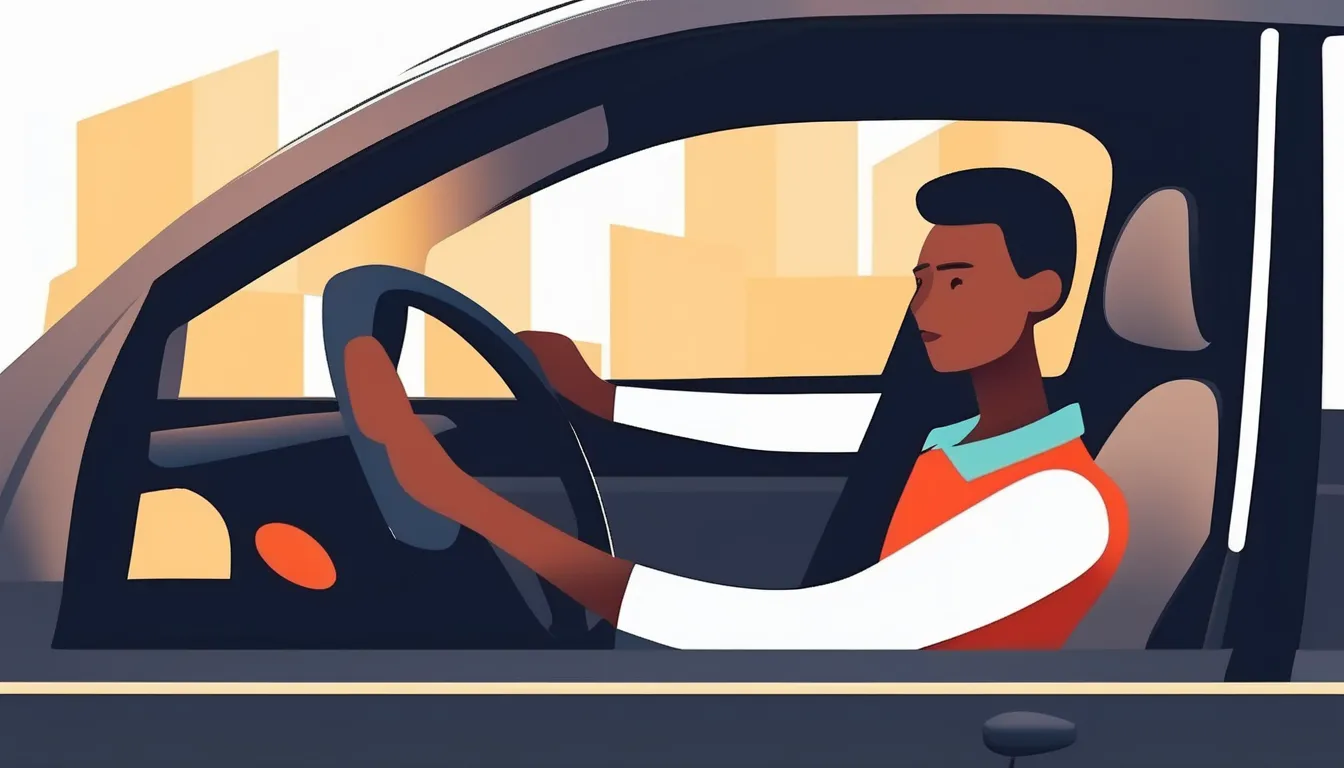
You’re about to take the first step towards becoming a licensed driver, and that’s a significant milestone. Before you get behind the wheel, it’s essential to understand the basics of safe driving. You’ve probably heard that driving is all about instinct, but the truth is, it requires a combination of theoretical knowledge and practical skills. You’ll need to master basic vehicle control, understand road signs and signals, and learn how to navigate intersections and turns safely. But where do you start, and what are the most critical skills to focus on?
Preparing for Your First Lesson
As you sit in the driver’s seat, gripping the steering wheel tightly, you’re about to take the first step in a journey that requires focus and dedication.
Preparing for your first lesson involves more than just getting into the vehicle. It starts with making sure you have all necessary documents, such as a valid permit or license, and proof of insurance.
Next, you’ll need to familiarize yourself with the vehicle’s controls and instruments. Take a moment to locate the mirrors, seat adjustments, and other essential features.
Ensure you’re comfortable and can reach the pedals and steering wheel without straining.
Before the lesson, discuss what to expect with your instructor. Share any concerns or anxieties you may have, and ask about their teaching approach.
This will help you feel more at ease during the lesson.
Lastly, plan to arrive early to complete any necessary paperwork and get settled before starting the lesson.
By being prepared, you’ll be able to focus on learning and make the most of your first driving lesson.
A well-prepared student is a safe and confident driver.
Mastering Basic Vehicle Control
Mastering the basics of vehicle control is key to becoming a confident and safe driver. You’ll start by getting familiar with the vehicle’s controls and instruments.
Practice adjusting the seat, mirrors, and steering wheel to your comfort. Make sure you can see clearly and reach all controls without straining.
Next, focus on accelerating and braking smoothly. Practice gentle acceleration from a standstill, and gradually increase your speed.
Press the brake pedal gently, feeling for the point where the vehicle begins to slow down. You’ll also practice turning, using the steering wheel to guide the vehicle in different directions.
Remember to check your mirrors and blind spots before turning.
Understanding Road Signs and Signals
Road signs and signals are a crucial part of navigating safely through traffic. You need to be able to recognize and understand their meanings to avoid accidents and ensure a smooth journey.
There are three main categories of road signs: warning signs, guide signs, and regulatory signs. Warning signs alert you to potential hazards such as curves, intersections, and road conditions. Guide signs provide information about directions, distances, and services. Regulatory signs inform you of traffic laws and regulations, such as speed limits and parking restrictions.
As you drive, you’ll also encounter traffic signals, including traffic lights and pedestrian signals. Familiarize yourself with the different colors and symbols used on these signals. Red means stop, yellow means caution, and green means go.
Pedestrian signals will often display walking or hand symbols to indicate when it’s safe for pedestrians to cross the road.
Being aware of road signs and signals is essential for safe driving. Take the time to study and learn their meanings to ensure you’re prepared for the road ahead.
Navigating Intersections and Turns
You’ve learned to recognize and understand road signs and signals; now it’s time to put that knowledge into practice when navigating intersections and turns. As you approach an intersection, slow down and be prepared to stop. Come to a complete halt at the stop line or, if there’s no line, before the crosswalk.
Look left, right, and left again for pedestrians, bicyclists, and other vehicles.
When turning, signal your intentions early and clearly. Use your turn signal consistently, even if you’re turning into a parking lot. Check your mirrors and blind spots before making a turn.
For right turns, yield to pedestrians and bicyclists in the crosswalk. For left turns, yield to oncoming traffic and pedestrians.
When navigating roundabouts or traffic circles, signal as you approach the intersection and yield to traffic already in the circle.
Travel counterclockwise and signal before exiting the circle. Always follow the flow of traffic and be aware of your surroundings.
Driving Defensively at Night
How differently do nighttime driving conditions require you to adjust your defensive driving techniques? Nighttime driving demands greater caution, as reduced visibility can lead to a higher risk of accidents.
You’ll need to slow down, increase your following distance, and be extra vigilant.
When driving at night, your eyes take longer to adjust to changes in light. Dim your dashboard lights to reduce glare, and avoid looking directly at oncoming headlights.
Use your low beams when approaching oncoming traffic or following another vehicle to prevent blinding them.
Be aware of pedestrians, bicyclists, and animals that may not be easily visible in the dark.
Anticipate the actions of other drivers, especially those who may not be using their headlights or may be driving recklessly.
Keep an eye out for road debris, potholes, and other hazards that can be harder to spot at night.
Conclusion
You’ve made it through the basics of learning to drive. By mastering vehicle control, understanding road signs and signals, navigating intersections and turns, and آموزش رانندگی برای مبتدیان defensively at night, you’re well on your way to becoming a safe and responsible driver. Keep practicing consistently and you’ll develop the skills and confidence you need to hit the road. Stay focused, stay alert, and most importantly, stay safe.
